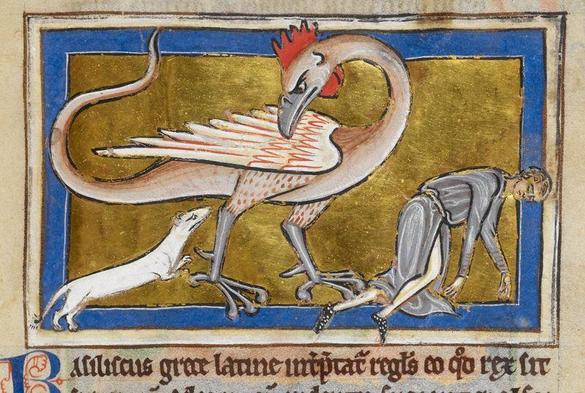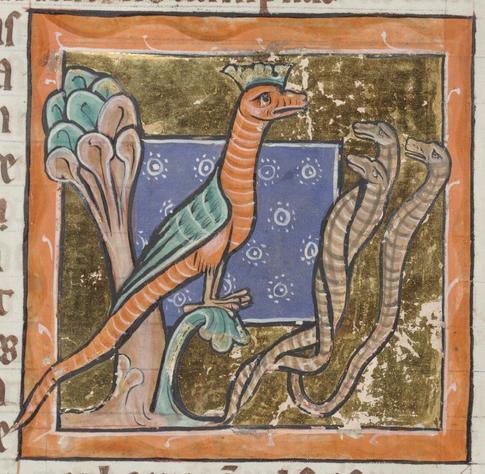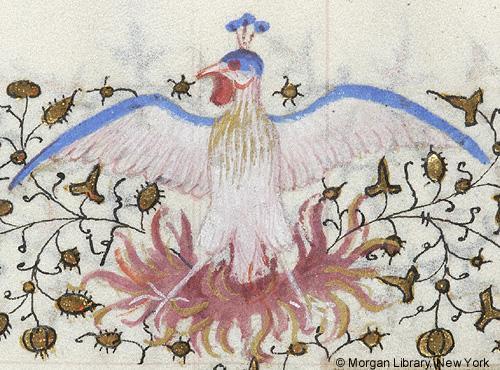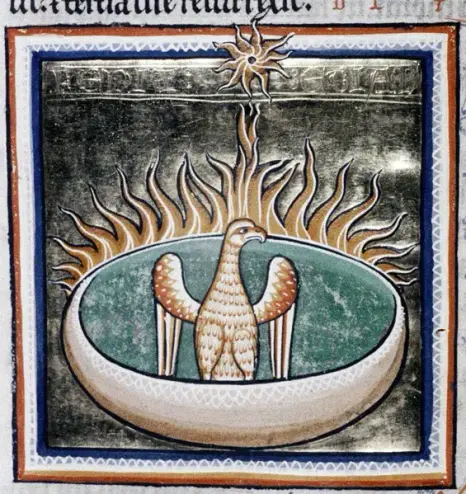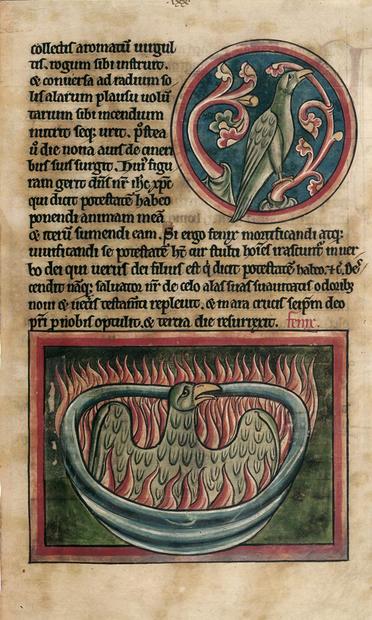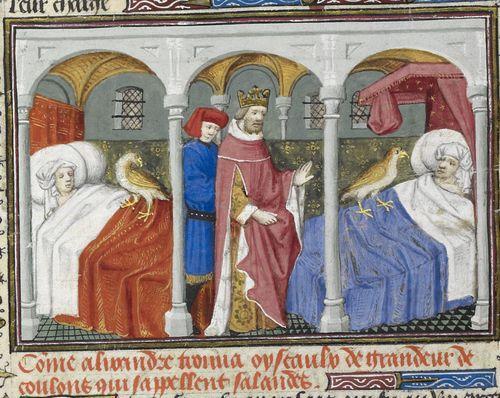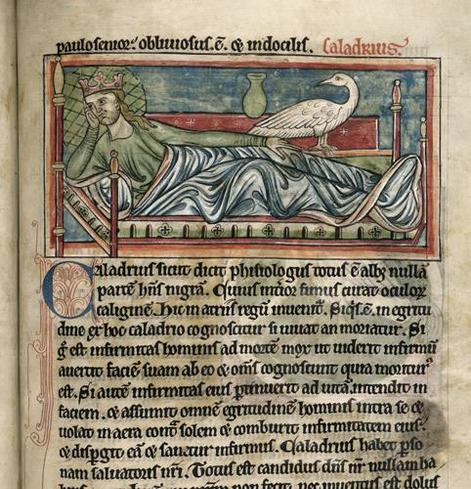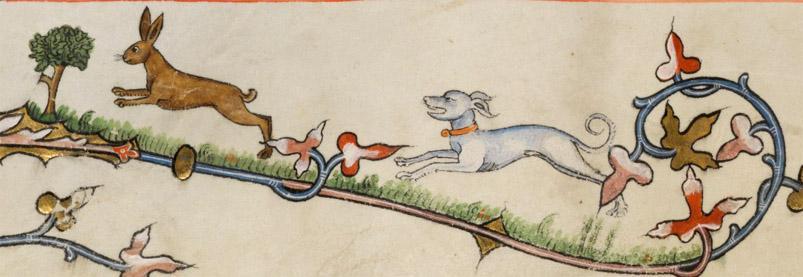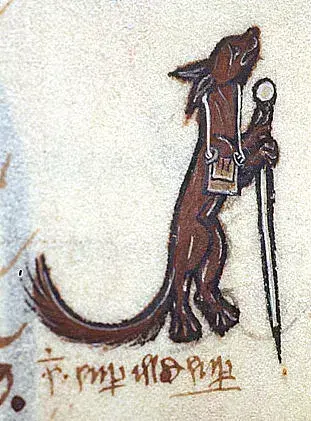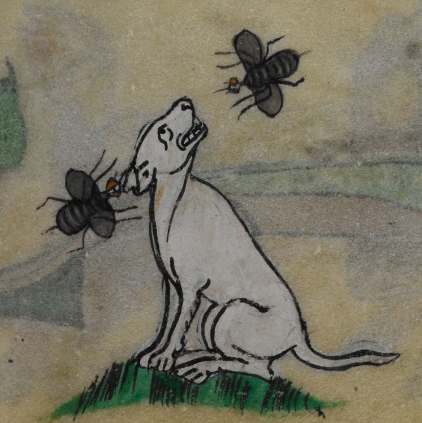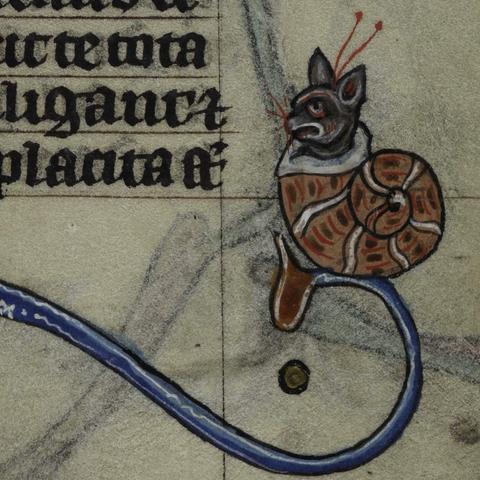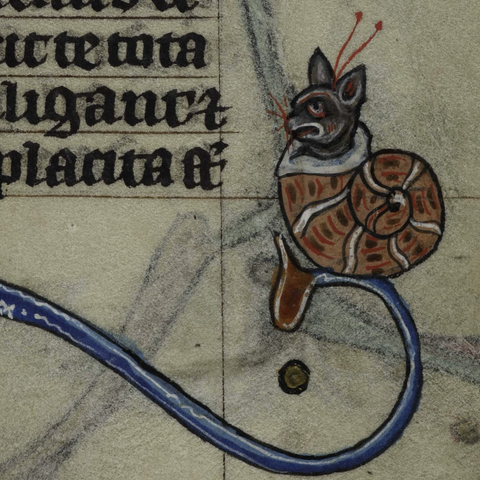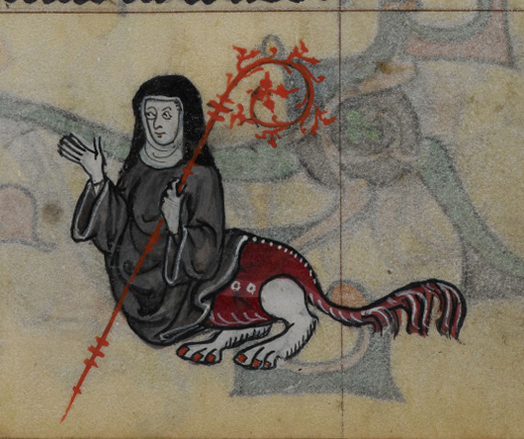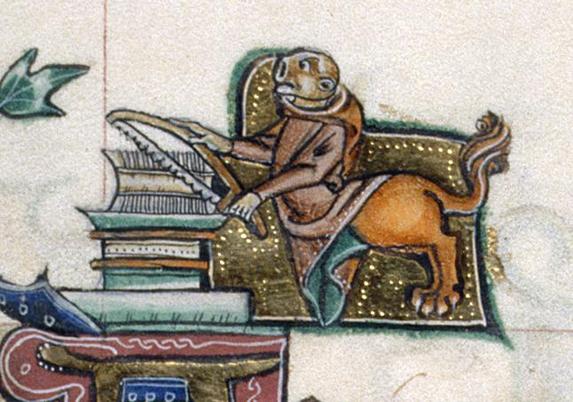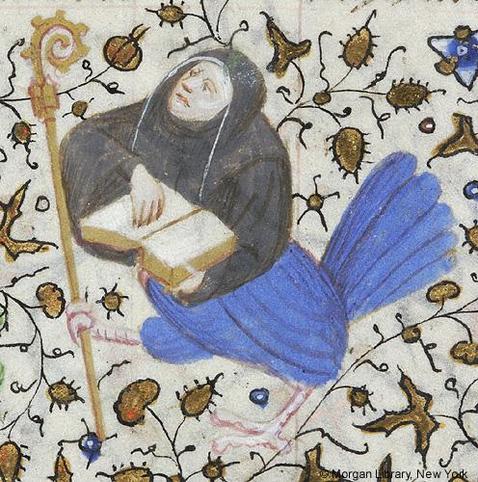This basilisk from another English bestiary, dated 1200-1225, has just struck a victim dead and is looking at a weasel, the only animal considered able to kill it at the time. #medievalmanuscripts #medievalart #bestiary #basilisk
#medievalManuscripts
This week we're focusing on basilisks starting with this King of the Basilisks being paid homage by lesser snakes from an English bestiary dated 1225-1250. #medievalmanuscripts #medievalart #bestiary #basilisk
This phoenix is from a French Book of Hours dated c1420-1425 and was a marginalia image in the "Fifteen Joys of the Virgin" section. #medievalmanuscripts #phoenix #medievalart
This image from the Ashmole Bestiary, dated to the early 13th century, shows the phoenix on its funeral pyre. The pyre is lit by the rays of the sun. #medievalmanuscripts #phoenix #medievalart
The phoenix has a very long history with its first written description dating back to the 8th century BCE, although in the 5th century BCE it was attributed to ancient Egypt by Herodotus. This image of the phoenix is from the 12th century Aberdeen Bestiary. #medievalmanuscripts #phoenix #medievalart
Our medieval beast this week is the phoenix. Our first image, from an English bestiary dated to 1225-1250, is rare in showing the phoenix unimmolated as well as immolated. #medievalmanuscripts #phoenix #medievalart
This detail of the caladrius is from a French manuscript dated around 1285. #medievalmanuscripts #medievalart #caladrius
This faintly green caladrius has indicated that the matching patient will recover despite how alarmed both look. It is from an English bestiary from about 1170. #medievalmanuscripts #medievalart #caladrius
If the caladrius looked towards its patient, it was thought the patient would live. If it looked away, the patient would die. This image from a French manuscript, dated around 1445, shows the physician and the caladrius with both options. #medievalmanuscripts #medievalart #caladrius
We're focusing on the caladrius in medieval manuscripts this week. The caladrius is generally depicted as a white bird which will predict whether a sick person will live or die. This image of the caladrius (and its patient) is from about 1230. #medievalmanuscripts #medievalart #caladrius
Our final image of a dog in a medieval margin is from the Wettinger Graduale, dated to 1330-1335, and shows a dog chasing a rabbit or hare. #medievalmarginalia #medievalmanuscripts #medievalart
Our rather sad-looking dog with a satchel and walking stick here is from Aristotle's "Libri Naturales" in a 13th century translation. #medievalmarginalia #medievalmanuscripts #medievalart
Our second medieval dog is actually three dogs being walked by a well coifed lady from the Alphonso Psalter, dated to around 1284. #medievalmarginalia #medievalmanuscripts #medievalart
Our first image this week is from the 14th century Maastricht Hours and features this week's marginalia focus, dogs. #medievalmarginalia #medievalmanuscripts #medievalart
#WorldOtterDay musical entertainment:
Bagpiping #otter in the margin of the Book of Hours, Lyon, c.1505-10; Lyon, Bibliothèque municipale, MS 6881, fol. 63v.
https://arca.irht.cnrs.fr/ark:/63955/md32d791w48g
#MedievalMarginalia #MedievalManuscripts
A belated #cat for #Caturday and an early #snail for a #SlowSunday : Cat in a snail shell from the Book of Hours, Use of Maastricht (‘The Maastricht Hours’), Stowe MS 17 f.185 Netherlands, S. (Liège), 1st quarter 14th c. British Library collection #CatsInArt #MedievalManuscripts #MedievalMarginalia
A belated #cat for #Caturday and an early #snail for a #SlowSunday :
Cat in a snail shell from the Book of Hours, Use of Maastricht (‘The Maastricht Hours’), Stowe MS 17 f.185
Netherlands, S. (Liège), 1st quarter 14th c.
British Library collection
#CatsInArt #MedievalManuscripts #MedievalMarginalia
Our final figure of clergy hybrids is from the Maastricht Book of Hours which dates from around 1300-1325. It shows a nun (or abbess) holding a crozier with the rear end of an indeterminate animal. #medievalmarginalia #medievalmanuscripts
Our third clergy hybrid medieval marginalia figure is a monk with the hind end of a ?lion ?dog sawing at a pile of books. It is from the Gorleston Psalter from the early 14th century. #medievalmarginalia #medievalmanuscripts
Our second hybrid clergy figure is a nun holding a book with her hands… and a crozier with one of her claws from a French book of hours dated around 1420. #medievalmarginalia #medievalmanuscripts
